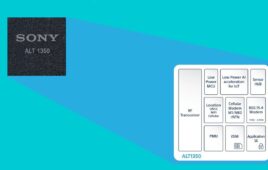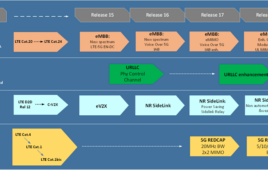It’s been a little over a year since the Myriad Group was created with Esmertec’s acquisition of Purple Labs, and it’s living up to its name. But at the moment, social networking on mass-market phones – for obvious reasons – is front and center of the company’s strategy.
Many apps are available to connect mobile phone users to Facebook. That’s not a difficult feature to enable, but getting multiple social networks and instant messaging (IM) running simultaneously on feature phones is more of a challenge, says Steve Langkamp, chief commercial officer for Myriad Group. It’s one that Myriad can accomplish thanks to its acquisition last September of Xumii, a small company with about 17 employees based in San Mateo, Calif., and Sydney, Australia.
Xumii’s cloud computing architecture allows mobile users to simultaneously access Facebook, MySpace, Flickr, YouTube, Google Talk, Yahoo Messenger, AIM, Windows Live and other Internet services from a single “social phonebook.”
Carrier Deals
That’s what Myriad will be providing to Telefónica under an agreement announced last week. The social networking service will be available to Telefonica subscribers across 12 Latin American countries. Myriad also is supplying Australian mobile operator Optus with a similar service for its 8 million customers.
On the carrier side, Myriad’s servers get connected into the operators. But for Myriad, the ultimate goal is to embed the client-side Xumii technology directly into phones, and it is working with manufacturers to do that.
“Social messaging with your Facebook or Twitter friend should really be no different than text messaging with mobile friends, and our intent is to make that just as commonplace,” Langkamp says. “Telefonica and Myriad share a view that social networking will be the next killer app on mobile, and we think within a few years, it will start to be an everyday activity for the masses.”
It might sound like old hat. Other platforms like Motorola’s Blur are designed to bring social networking to a new level on smartphones. INQ was one of the first to heavily incorporate social networking into affordable phones.
But Langkamp says the difference with Myriad is it has the history and “deep expertise” in making these kinds of messaging apps work on feature phones. Most phones out there today, he says, require the user to leave one app before going into another. The advantage of the Xumii technology is you can use all of them at the same time. And when it’s embedded in phones, “our vision for this is the whole phone becomes social, so when you, for example, take a photo, you shouldn’t have to close the camera and go find the Facebook app. You should be able to upload right from the camera. No one is doing that on a feature phone today.”
But what if, say, Facebook should fall out of favor and a new social network comes around, similar to how Facebook all but obliterated MySpace? Myriad has an answer to that. “We can add new social networks at any time,” Langkamp says.
More Oomph
A deal with an operator the size of Telefonica would be difficult for a small startup like Xumii on its own, but now that it’s part of Myriad, operators are more likely to take a look at the technology, he says. Myriad’s headquarters are in Dübendorf-Zürich Switzerland, and it operates offices in France, the United Kingdom, the United States, Mexico, China, South Korea, Taiwan, Japan and Australia.
It wasn’t that long ago that the precursor to Myriad Group had only about 80 employees and $2 million in revenues. Now it employs some 800 engineers and is reporting annual revenues of about $125 million.
There’s a lot of history behind Myriad. Early in their careers, CEO Simon Wilkinson and Langkamp, an early player in the PCS carrier PrimeCo Personal Communications, ran Magic4, a company specializing in text, photo and other mobile messaging. Magic4 was acquired in 2004 by Openwave Systems.
By June 2008, Purple Labs had acquired the Openwave mobile phone software business, including its browser and messaging client technologies. Purple Labs also acquired the mobile applications portfolio of the French phone manufacturer Sagem Wireless.
Esmertec is a founding member of the Google-led Open Handset Alliance and made key contributions to the Android platform. In April 2009, Myriad, formerly Esmertec, completed its acquisition of Purple Labs, based in Chambery, France. Last fall, Myriad appointed Benoit Schillings as chief technical officer; he previously was chief technologist at Nokia and was technology adviser to Nokia CEO Olli-Pekka Kallasvuo. Before that, he was at Trolltech.
Historically, Myriad Group has worked with handset makers such as Nokia, Samsung, Motorola, LG and Sony Ericsson. A few months ago, Myriad introduced Dalvik Turbo virtual machine, which promises to deliver increased application execution speeds of up to three times and improved battery life for Android handsets.
The company’s name doesn’t mean much to most consumers because Myriad is strictly a B2B brand and white labels its services, but the Puma sports phone made by Sagem uses Myriad’s software. Overall, Myriad’s software has now shipped in more than 2 billion phones.
Who knows? It just might have a role to play in helping this little thing known as social networking catch on among the owners of mass market phones.




